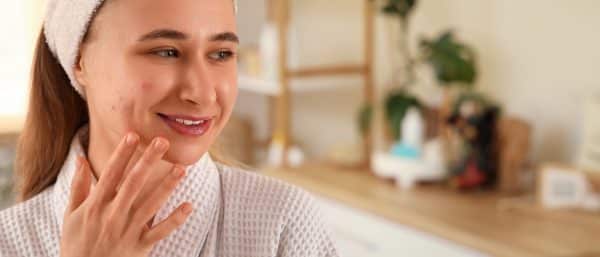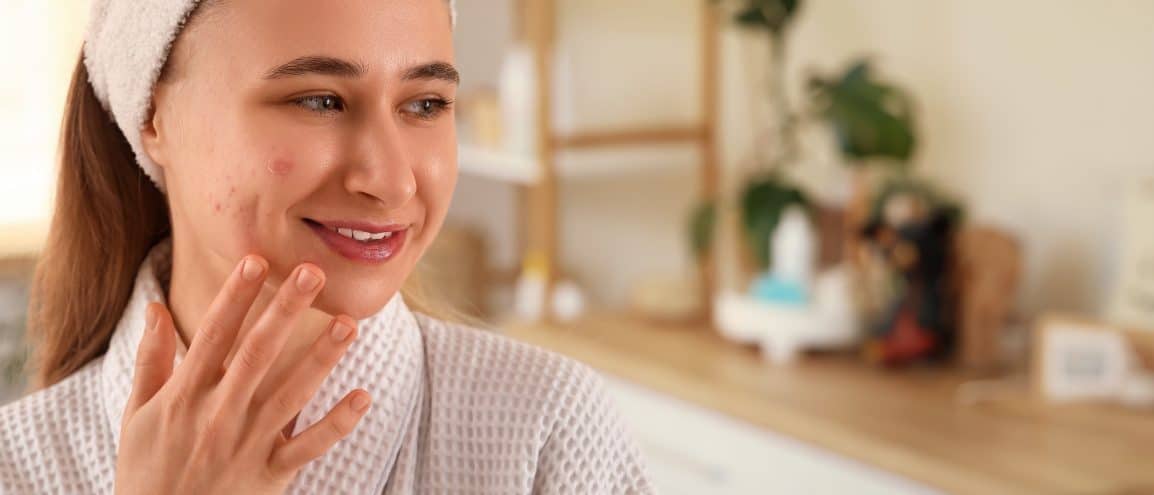
Young woman with acne applying pimple patches at home
Breakouts can mess with your confidence, especially when they leave behind sore spots or marks that take forever to fade. It’s easy to feel frustrated when your skin doesn’t seem to bounce back right away. But acne is normal, and it happens to almost everyone during their teen years. It doesn’t make you less attractive or less you. It just means your skin needs a little extra care right now.
Helping your skin heal naturally starts with patience and simple habits that actually support recovery. The more you understand what your skin needs, the easier it becomes to bring back its calm, healthy glow.
Understand What Your Skin Needs
After a breakout, your skin enters a healing process. It’s working hard to calm inflammation, repair damage, and restore balance. This is the time to focus on gentle care rather than quick fixes. Avoid picking or squeezing spots, which can lead to acne scars or post-acne marks that take longer to fade.
To support skin recovery, start with the basics. Use mild skincare products that won’t clog pores or strip away moisture. Look for ingredients like salicylic acid, which helps clear dead skin cells and prevent new breakouts, and azelaic acid, known for reducing redness and calming irritated areas. If your skin feels dry or tight, switch to formulas with hydrating ingredients like hyaluronic acid or aloe vera. These promote a smoother texture while supporting healing.
During this stage, you may also hear about juvelook Singapore, a treatment that helps improve acne scars and support collagen renewal. While professional treatments should always be discussed with a qualified provider, learning about options like this can help you understand what’s available if you ever decide to explore safe, evidence-based ways to enhance your natural skin healing.
Keep Your Routine Simple and Consistent
You don’t need a dozen products to care for your skin. In fact, overusing skincare products or mixing too many active ingredients can make things worse. A simple routine (e.g., cleanse, moisturize, and protect) is often enough. Use a gentle cleanser twice daily to remove dirt and oil buildup from your sebaceous glands.
When choosing your moisturizer, go for lightweight, non-comedogenic options. These will hydrate your skin without blocking pores. If your dermatologist recommends benzoyl peroxide or topical antibiotics, follow the instructions carefully to avoid dryness or irritation.
And never skip sunscreen. Healing skin is sensitive to sunlight, and UV exposure can darken post-inflammatory hyperpigmentation or dark spots. Using SPF daily protects your progress and helps your complexion stay even.
Support Skin Healing From Within
What you eat and how you care for your body can affect your skin recovery. Your skin reflects your overall health, so giving it the right nutrients helps it heal faster. Focus on a balanced diet that includes fruits, vegetables, whole grains, and protein-rich foods. These provide vitamins like Vitamin C, which supports collagen production and reduces red spots from past breakouts.
Stay hydrated throughout the day. Water helps flush out impurities and supports your skin’s natural repair process. Sleep also plays a big role. When you rest, your body produces growth hormones that aid tissue renewal, so aim for at least seven to eight hours of quality sleep each night.
Finally, manage stress. Stress can trigger hormonal changes that increase oil production and lead to new breakouts. Your skin often mirrors how you feel inside, so caring for your emotional health is just as important as your skincare routine.
Treat Scars and Marks Gently
After acne clears, post-acne marks or mild atrophic scars can remain. These are reminders of what your skin has been through, not flaws. Over time, most fade naturally, but you can help the process along with the right care.
Look for natural exfoliants that promote cellular turnover, such as lactic acid or gentle scrubs with fine particles. These help remove dead skin cells and reveal fresher, smoother layers underneath. Be careful not to over-exfoliate; once or twice a week is usually enough.
If your dark spots or acne scars are more visible, ingredients like tranexamic acid or Vitamin C serums can help brighten those areas over time. They encourage an even tone and boost your skin’s radiance.
For deeper atrophic scars or uneven texture, professional procedures like chemical peels, skin needling, or laser resurfacing may be worth exploring with a licensed dermatologist in the future. These treatments help resurface your skin, smooth out indentations, and encourage collagen renewal. The key is to take things one step at a time and never rush your healing.
Build Healthy Skin Habits
You might be tempted to copy viral routines or try every product you see online, but true skin healing happens through consistency and care. Stick to a specific skincare routine that works for you and listen to your skin’s signals. If it’s red or irritated, it’s telling you to slow down.
Wash your pillowcases often to prevent clogged pores from oil and bacteria. Avoid touching your face too much, and don’t pick at scabs or spots—it delays healing and increases your risk of scarring.
If you use makeup, choose non-comedogenic options and always remove it before bed. Your skin needs time to breathe and repair overnight. Incorporate natural remedies like aloe vera or witch hazel if you enjoy soothing, plant-based care. These can calm inflammation and promote a balanced complexion.
Wrapping Up
Acne recovery is more than getting clear skin. It’s about building confidence, patience, and healthy habits that last. Treat your skin gently, focus on nourishment inside and out, and trust the natural healing process. Every step you take toward caring for yourself brings you closer to balance, strength, and a glow that comes from confidence, not perfection.

